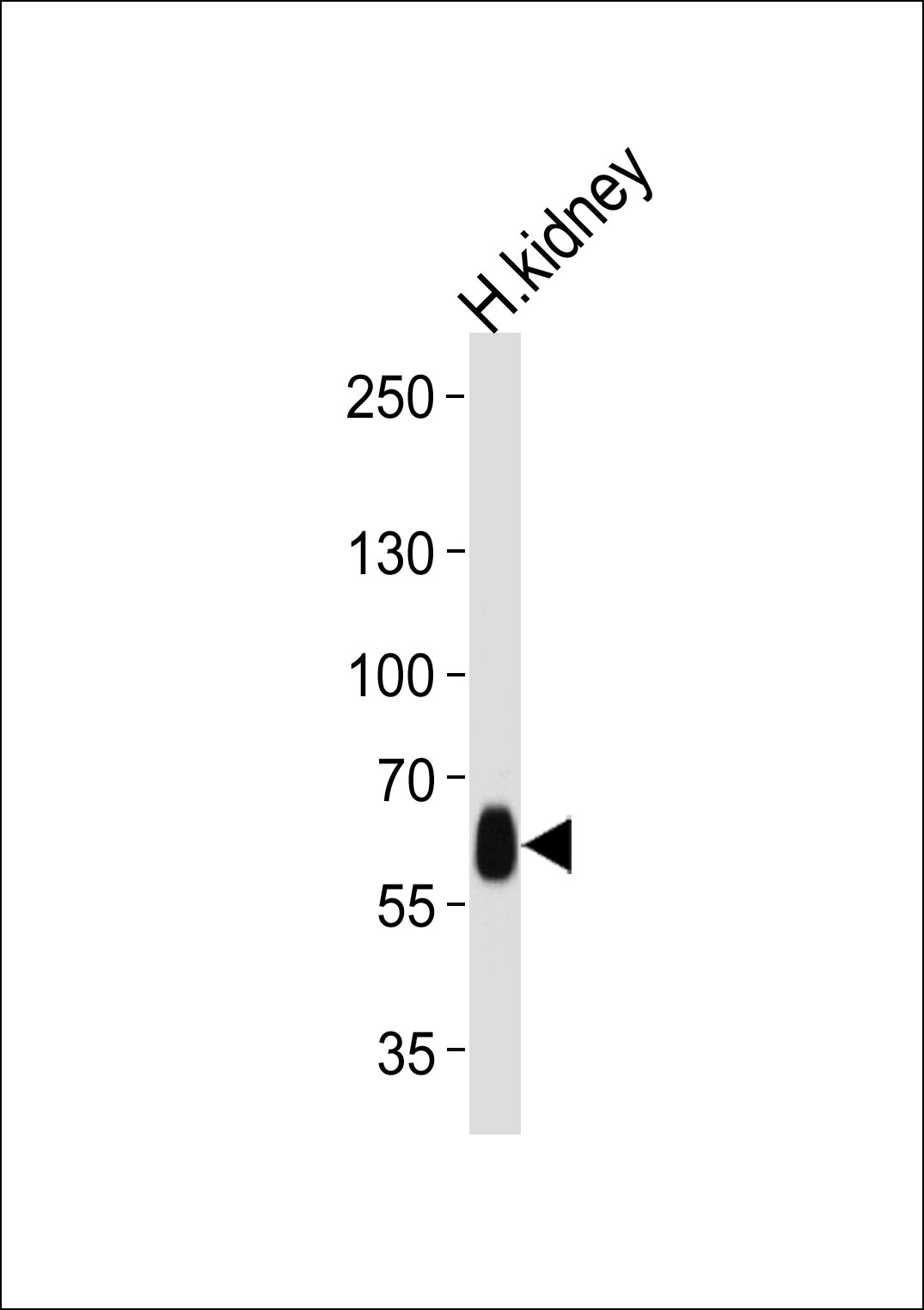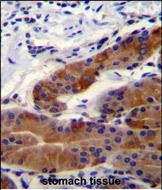DFNB31 Antibody (Center)
Affinity Purified Rabbit Polyclonal Antibody (Pab)
- 产品详情
- 实验流程
- 背景知识
Application
| IHC-P, WB, E |
|---|---|
| Primary Accession | Q9P202 |
| Other Accession | NP_056219.3, NP_001077354.2 |
| Reactivity | Human |
| Host | Rabbit |
| Clonality | Polyclonal |
| Isotype | Rabbit IgG |
| Calculated MW | 96558 Da |
| Antigen Region | 378-406 aa |
| Gene ID | 25861 |
|---|---|
| Other Names | Whirlin, Autosomal recessive deafness type 31 protein, DFNB31, KIAA1526, WHRN |
| Target/Specificity | This DFNB31 antibody is generated from rabbits immunized with a KLH conjugated synthetic peptide between 378-406 amino acids from the Central region of human DFNB31. |
| Dilution | IHC-P~~1:100~500 WB~~1:1000 E~~Use at an assay dependent concentration. |
| Format | Purified polyclonal antibody supplied in PBS with 0.09% (W/V) sodium azide. This antibody is purified through a protein A column, followed by peptide affinity purification. |
| Storage | Maintain refrigerated at 2-8°C for up to 2 weeks. For long term storage store at -20°C in small aliquots to prevent freeze-thaw cycles. |
| Precautions | DFNB31 Antibody (Center) is for research use only and not for use in diagnostic or therapeutic procedures. |
| Name | WHRN (HGNC:16361) |
|---|---|
| Function | Involved in hearing and vision as member of the USH2 complex. Necessary for elongation and maintenance of inner and outer hair cell stereocilia in the organ of Corti in the inner ear. Involved in the maintenance of the hair bundle ankle region, which connects stereocilia in cochlear hair cells of the inner ear. In retina photoreceptors, required for the maintenance of periciliary membrane complex that seems to play a role in regulating intracellular protein transport. |
| Cellular Location | Cytoplasm {ECO:0000250|UniProtKB:Q80VW5}. Cell projection, stereocilium {ECO:0000250|UniProtKB:Q80VW5}. Cell projection, growth cone {ECO:0000250|UniProtKB:Q80VW5}. Photoreceptor inner segment {ECO:0000250|UniProtKB:Q80VW5}. Synapse {ECO:0000250|UniProtKB:Q810W9}. Note=Detected at the level of stereocilia in inner and outer hair cells of the cochlea and vestibule Localizes to both tip and ankle-link stereocilia regions. Colocalizes with the growing ends of actin filaments. Colocalizes with MPP1 in the retina, at the outer limiting membrane (OLM), outer plexifirm layer (OPL), basal bodies and at the connecting cilium (CC). In photoreceptors, localizes at a plasma membrane microdomain in the apical inner segment that surrounds the connecting cilia called periciliary membrane complex. {ECO:0000250|UniProtKB:Q80VW5, ECO:0000250|UniProtKB:Q810W9, ECO:0000269|PubMed:17584769} |
For Research Use Only. Not For Use In Diagnostic Procedures.
Provided below are standard protocols that you may find useful for product applications.
BACKGROUND
This gene is thought to function in the organization and stabilization of sterocilia elongation and actin cystoskeletal assembly, based on studies of the related mouse gene. Mutations in this gene have been associated with autosomal recessive non-syndromic deafness and Usher Syndrome. Alternative splicing of this gene results in multiple transcript variants encoding different isoforms.
REFERENCES
Letra, A., et al. Am. J. Med. Genet. A 152A (7), 1701-1710 (2010) :
Secolin, R., et al. Psychiatr. Genet. 20(3):126-129(2010)
Aller, E., et al. Mol. Vis. 16, 495-500 (2010) :
Toiyama, Y., et al. Int. J. Oncol. 35(4):709-715(2009)
Gosens, I., et al. Hum. Mol. Genet. 16(16):1993-2003(2007)
终于等到您。ABCEPTA(百远生物)抗体产品。
点击下方“我要评价 ”按钮提交您的反馈信息,您的反馈和评价是我们最宝贵的财富之一,
我们将在1-3个工作日内处理您的反馈信息。
如有疑问,联系:0512-88856768 tech-china@abcepta.com.























 癌症的基本特征包括细胞增殖、血管生成、迁移、凋亡逃避机制和细胞永生等。找到癌症发生过程中这些通路的关键标记物和对应的抗体用于检测至关重要。
癌症的基本特征包括细胞增殖、血管生成、迁移、凋亡逃避机制和细胞永生等。找到癌症发生过程中这些通路的关键标记物和对应的抗体用于检测至关重要。 为您推荐一个泛素化位点预测神器——泛素化分析工具,可以为您的蛋白的泛素化位点作出预测和评分。
为您推荐一个泛素化位点预测神器——泛素化分析工具,可以为您的蛋白的泛素化位点作出预测和评分。 细胞自噬受体图形绘图工具为你的蛋白的细胞受体结合位点作出预测和评分,识别结合到自噬通路中的蛋白是非常重要的,便于让我们理解自噬在正常生理、病理过程中的作用,如发育、细胞分化、神经退化性疾病、压力条件下、感染和癌症。
细胞自噬受体图形绘图工具为你的蛋白的细胞受体结合位点作出预测和评分,识别结合到自噬通路中的蛋白是非常重要的,便于让我们理解自噬在正常生理、病理过程中的作用,如发育、细胞分化、神经退化性疾病、压力条件下、感染和癌症。







